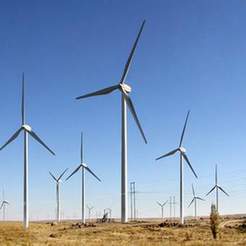Government and business have an equally important role to play in reducing the greenhouse gas emissions (GHG) that are responsible for global climate change, stressed Gao Guangsheng, Director General of the Department of Climate Change of the National Development and Reform Commission, at a sub-session of the Beijing High-level Conference on Climate Change: Technology Development and Technology Transfer, held on November 7.
Mr. Gao said that businesses should play a fundamental role in addressing climate change as they both own and need most environmentally sound technologies (ESTs), and can execute the development, deployment and transfer of ESTs.
However, deploying ESTs will not necessarily result in significant profits for business, especially in developing countries, where maximizing profits is undoubtedly a "sacred duty" for companies, Mr. Gao stated.
|

|
|
Nowadays 40 percent of the world's wind turbines are produced in Denmark, a fact that is largely due to Danish government policies in the 1980s that guaranteed high on-grid wind power prices and 30 percent subsidies to purchasers of wind turbines. |
"Government should therefore formulate and implement policies favorable to enterprises' dissemination of ESTs, which is government's particular role in tackling climate change.
Only through such means as legislation, regulation, pricing, financial subsidy, and additional funding can the call for business involvement in cutting GHGs be transformed into meaningful actions," said the director general.
For example, specific policies that guarantee the grid-connection of wind power and subsidize the price of electricity generated by renewable energy have resulted in a rapid increase of wind power capacity in China.
The general installed capacity of wind power in China was 2.6 million kilowatt in 2006, an increase of over 100 percent compared with 2005. Taking into consideration the preferential policies enacted by the government aimed at expanding renewable energy, insiders are very optimistic about surpassing the 2010 and 2020 objectives set for general installed capacity of wind power, amounting to 5 million kilowatt and 30 million kilowatt respectively.
Previous research has shown that the cost of producing some wind turbines in China is 20 percent lower than in western countries, but China can only produce turbines that western countries were producing ten years ago, and the technological gap is widening.
Regarding this issue, Mr. Gao appealed to developed countries to do more to facilitate exporting renewable energy technology, and an appropriate international mechanism should be established for buyout and transfer to developing countries of the intellectual property rights of those technologies, so as to enable a faster substitution of renewable energy for fossil energy in developing countries like China.
(China.org.cn by Zhang Tingting November 8, 2008)